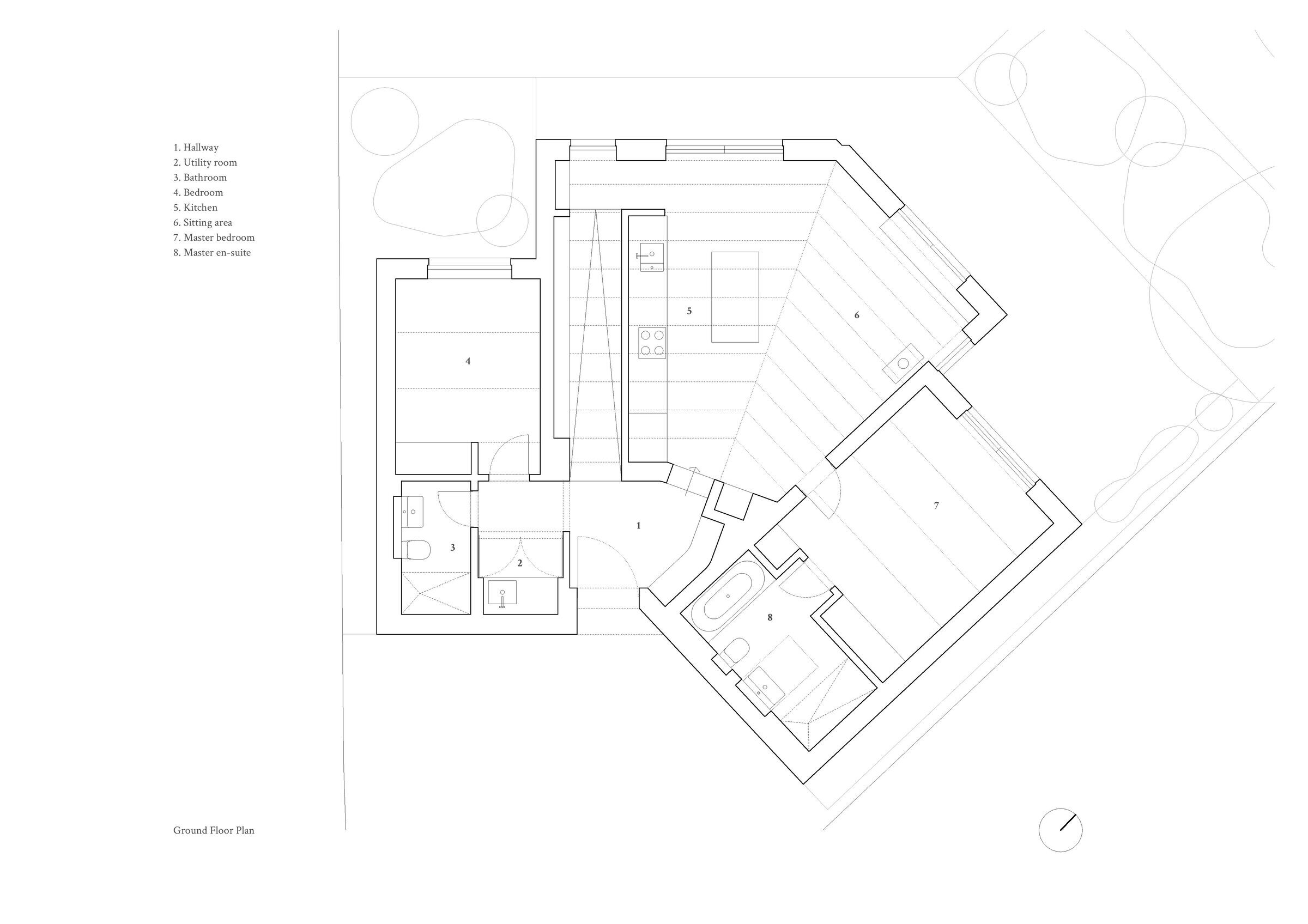Nestled within a small corner plot in Esher, Surrey, Butterfly House is a new compact home designed by Oliver Leech Architects to support multigenerational living. In 2018, clients Nikki and Richard Earthrowl commissioned the studio to design a future-proofed home for Nikki’s mother so that she can live within the plot of their existing family home.
The brief consisted of a two bedroom self-contained dwelling that includes space for a live-in carer, while also enabling the client’s mother to lead an independent, lightly assisted life well into the future.
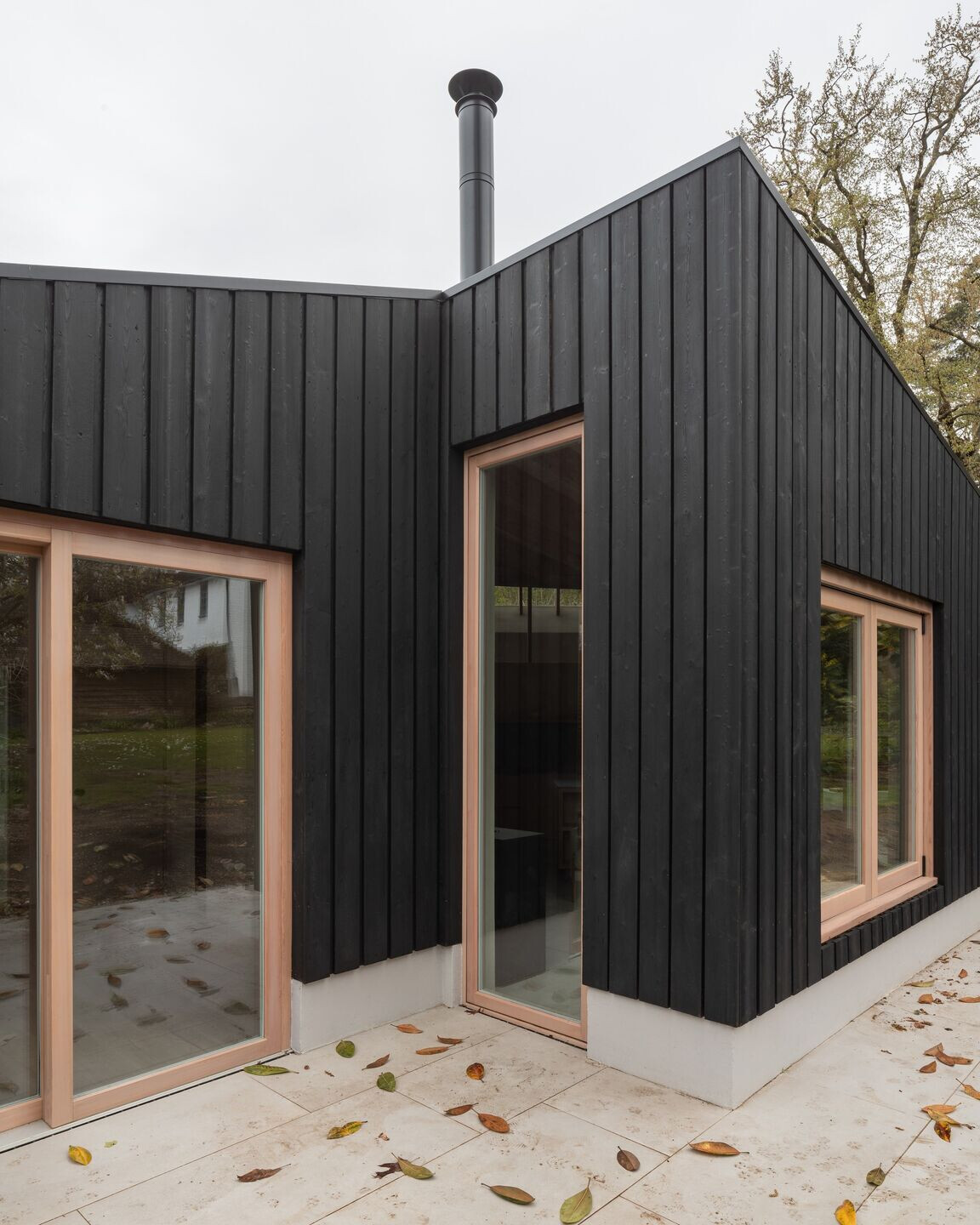
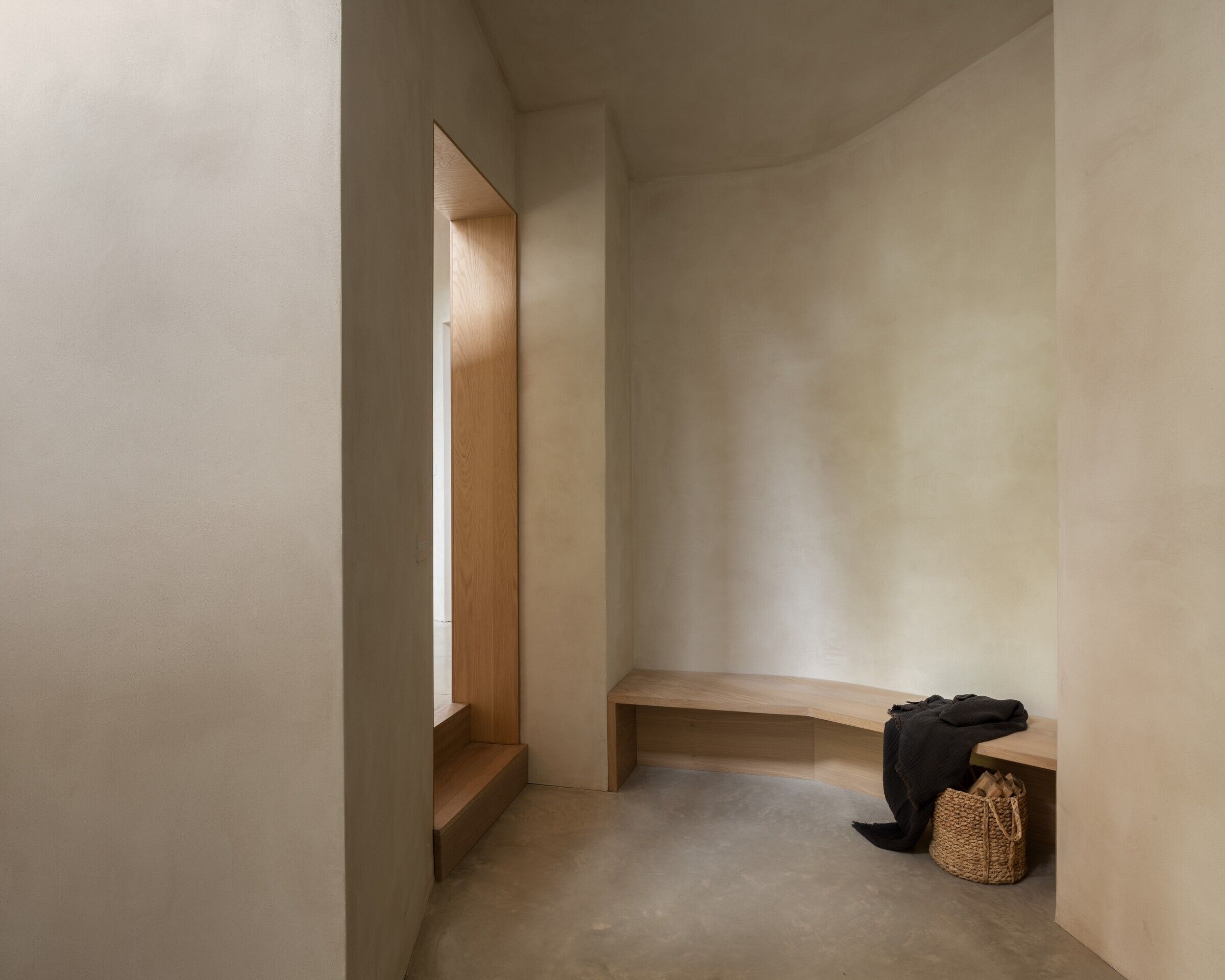
Set in the southern tip of the garden of the main house, the new house inhabits a small triangular corner, constrained on two sides. The triangular site dictated the form of the building, with four distinct pitched volumes, fanned-out to frame views, and prevent overlooking. Two sides hug the boundary, with roofs sloping down and away from the central volumes. The central volumes combine in a large open-plan living space that is expressed visually as an inverted ‘butterfly’ roof. All are wrapped in a burnt Japanese timber cladding that sits softly amongst the shadows of the surrounding trees. The splayed form of the four volumes is intended to avoid direct views of the main house, instead facing more private garden areas and large mature trees to shield the facade.
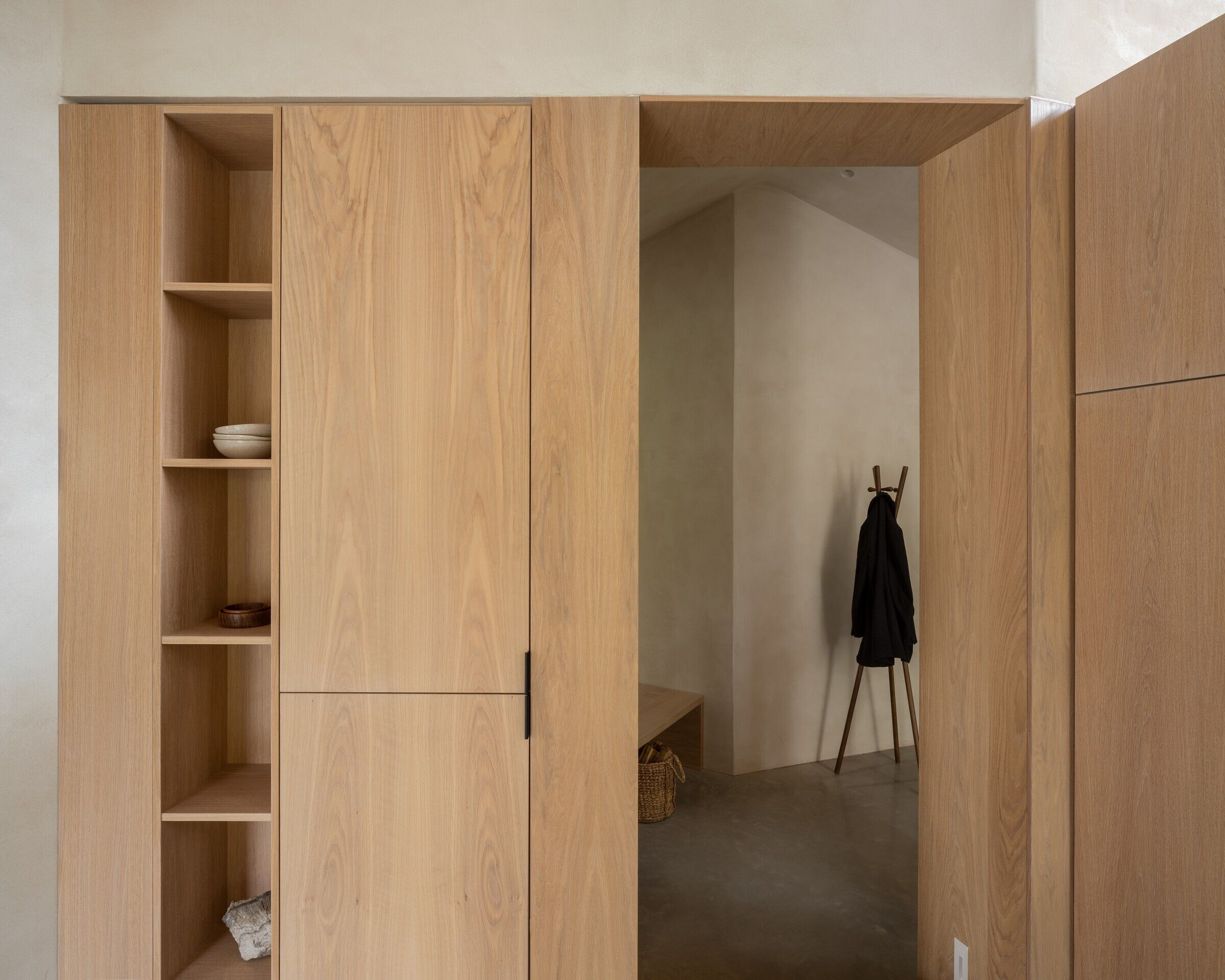
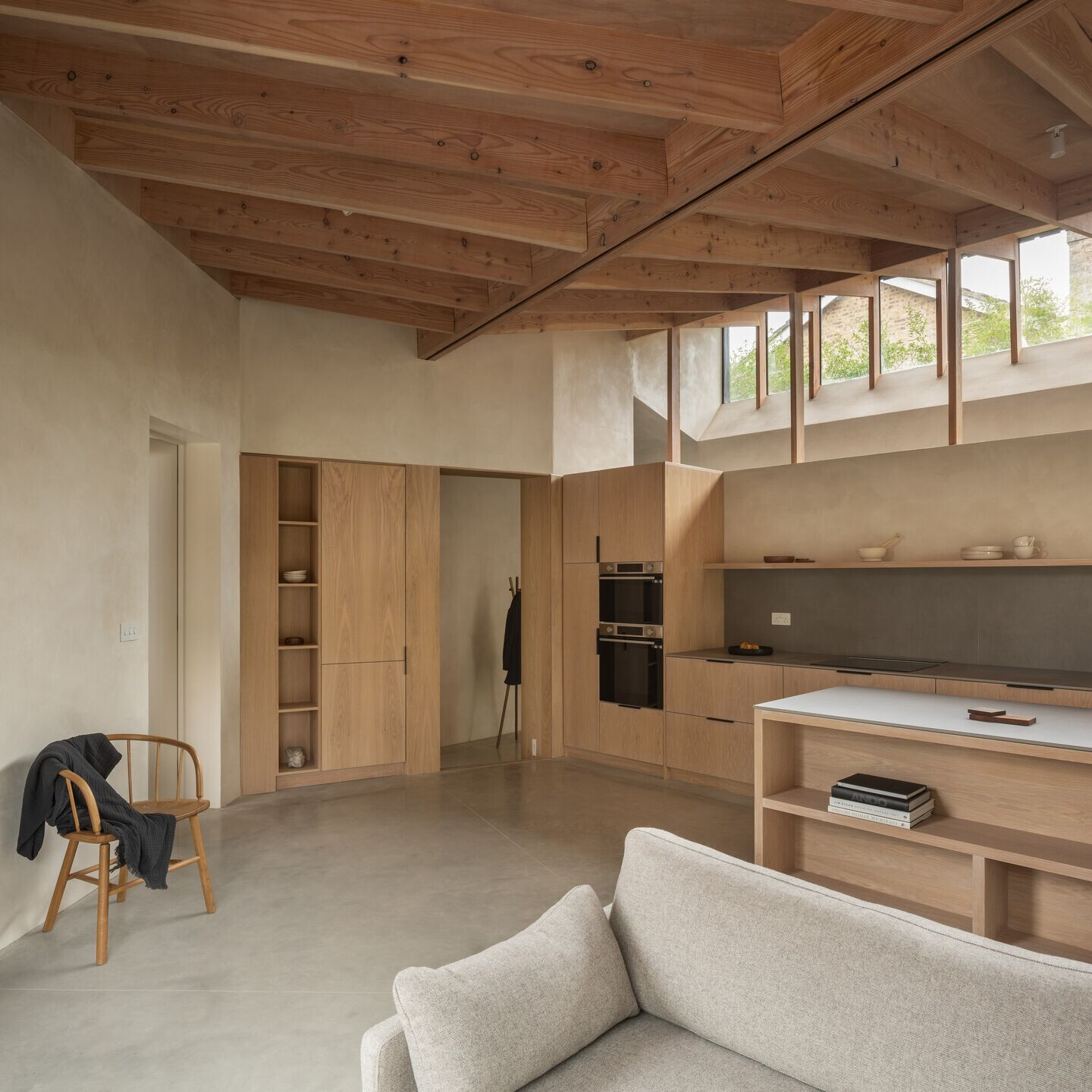
The roof-forms are expressed internally with exposed larch beams that create varying feelings of compression and expansion as the roof rises to a row of clerestory glazing, pouring light into the spaces throughout the day. The volumes converge over the entrance lobby where the walls and ceiling playfully meet in a darkened arrival space, as a prelude to the main rooms. A gentle ramp draws views through the house and connects the sunken entrance level up to a higher level and out to the garden.
The lower level contains carer accommodations, composed of a bedroom and bathroom, flanked by a utility area. From here, two steps lead towards an open plan kitchen, living and dining space. The ramp facilitates wheelchair access to this area should steps become unusable in the future.

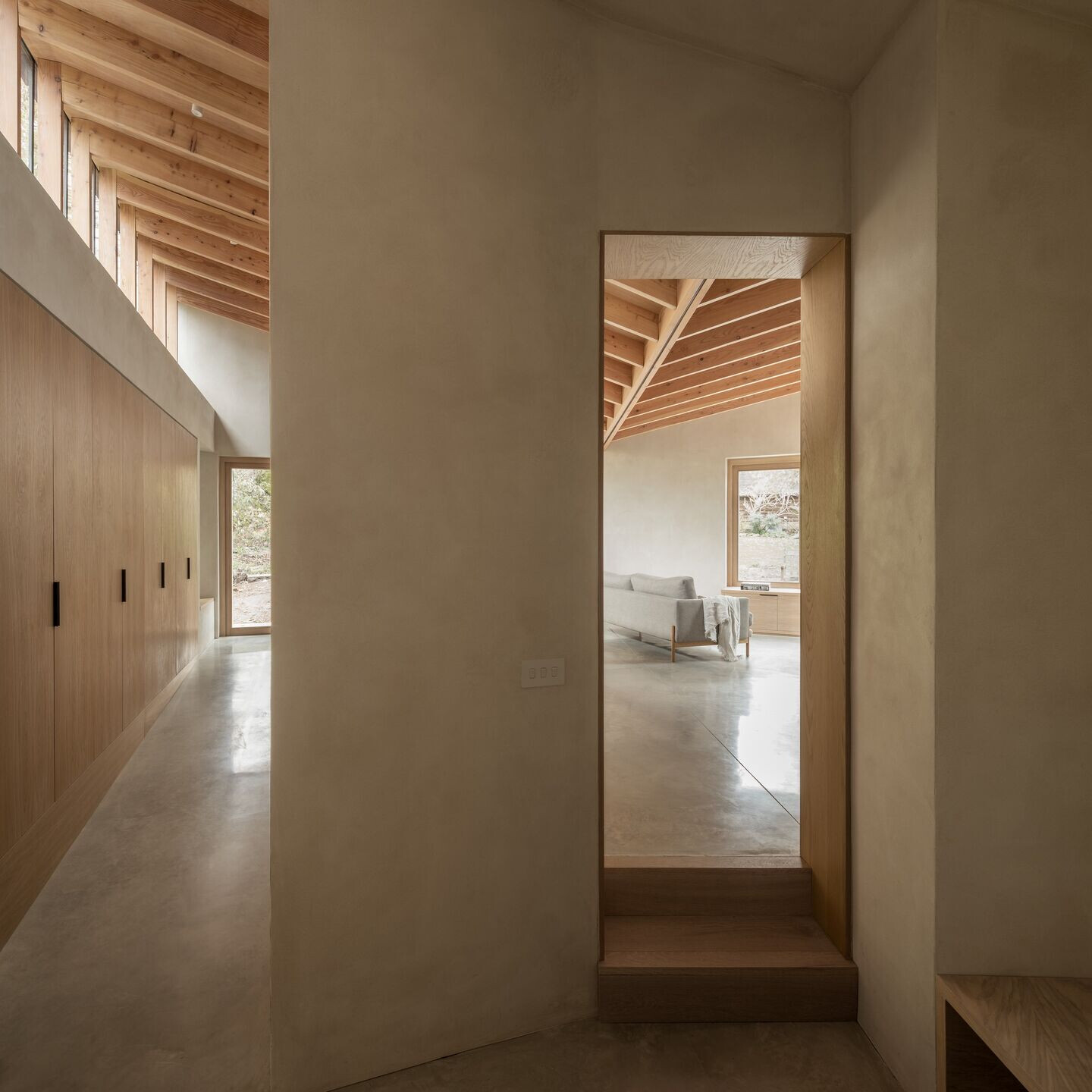
An important part of supported independent living is being able to maintain a level of autonomy. The kitchen design omits the use of high units, opting instead for low drawers and nothing above seated arm’s reach. Further spatial constraints inspired the design of an island on casters so that it can be moved around, ensuring future flexibility and versatility. The main bedroom and bathroom, on the upper level, have been designed for wheelchair access, if required, with flush access onto a private patio.
Accessibility and functionality dictate widths that are larger than typical standards, however the studio went beyond this. Small design moves help increase the feel of spaciousness despite the compact design. The high level clerestory windows catch sunlight throughout the day, with the shadows of the larch columns projected onto the exposed clay walls. The clerestory glazing provides views of the sky, important on a constrained site. The bedrooms are designed with double-spaced rafters in the ceiling to create a feeling of extra space.
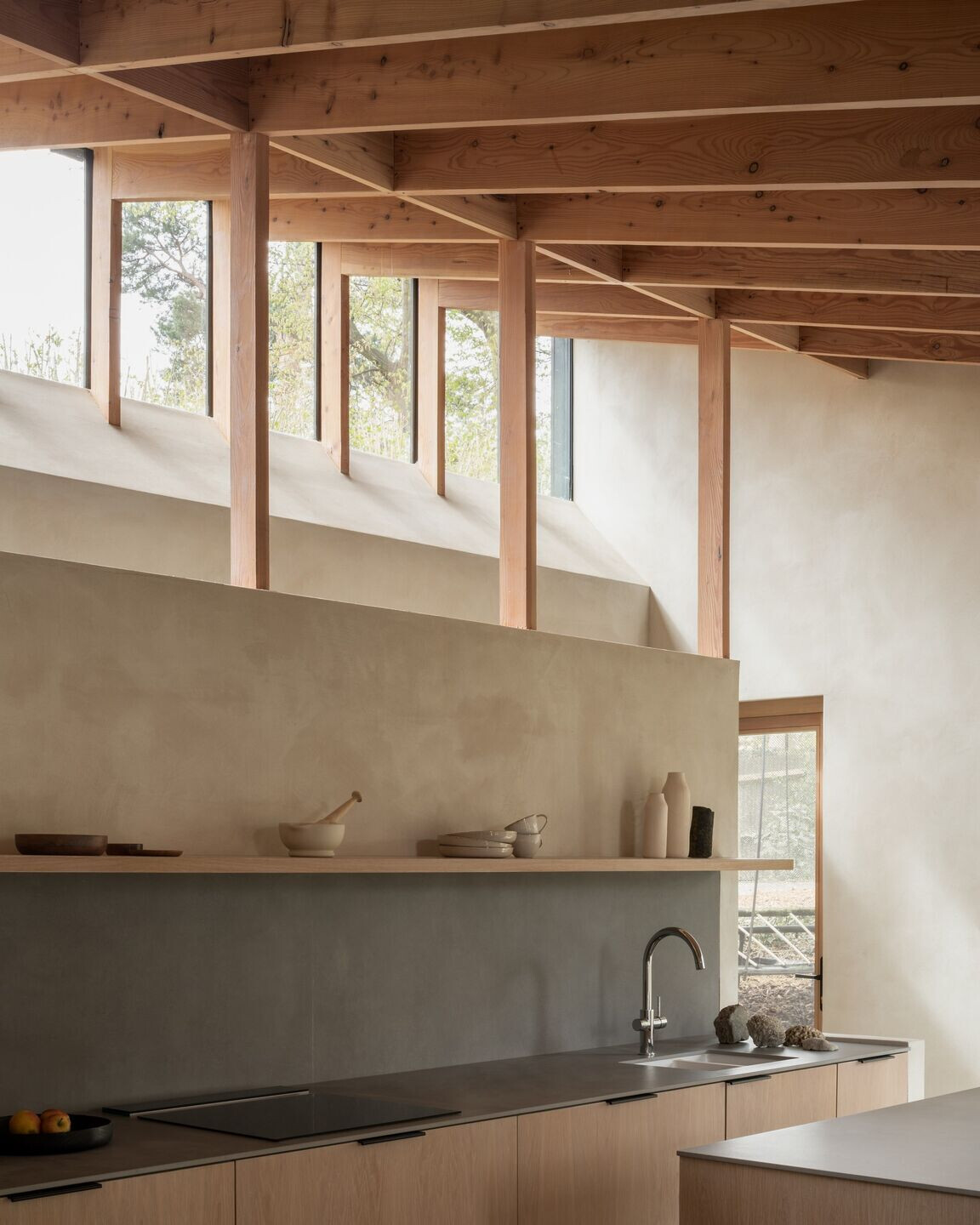

The spaces are unified through a restrained material palette. Polished concrete floors and pale clay plaster walls tie the spaces together, allowing the ceiling forms to be the focus. In contrast to the dark exterior, the interior finishes bring a muted, calm mood to the home, as a backdrop to the warm rich tones of the larch and oak joinery.
The kitchen was designed to integrate visually into the architecture, with oak units and a thin dark porcelain worktop that mirrors the polished concrete floors. A high shelf displays fossils collected during Nikki and her mother’s careers as geologists.
Material simplicity carries through into the two bathrooms, each of which is bathed in light through openable Velux skylights. The use of mirrors reflects the greenery outside to the interior, whilst walls are clad in small format white tile, as a purposeful inversion of the external material palette to signify a movement from the most visible to the most private of spaces.
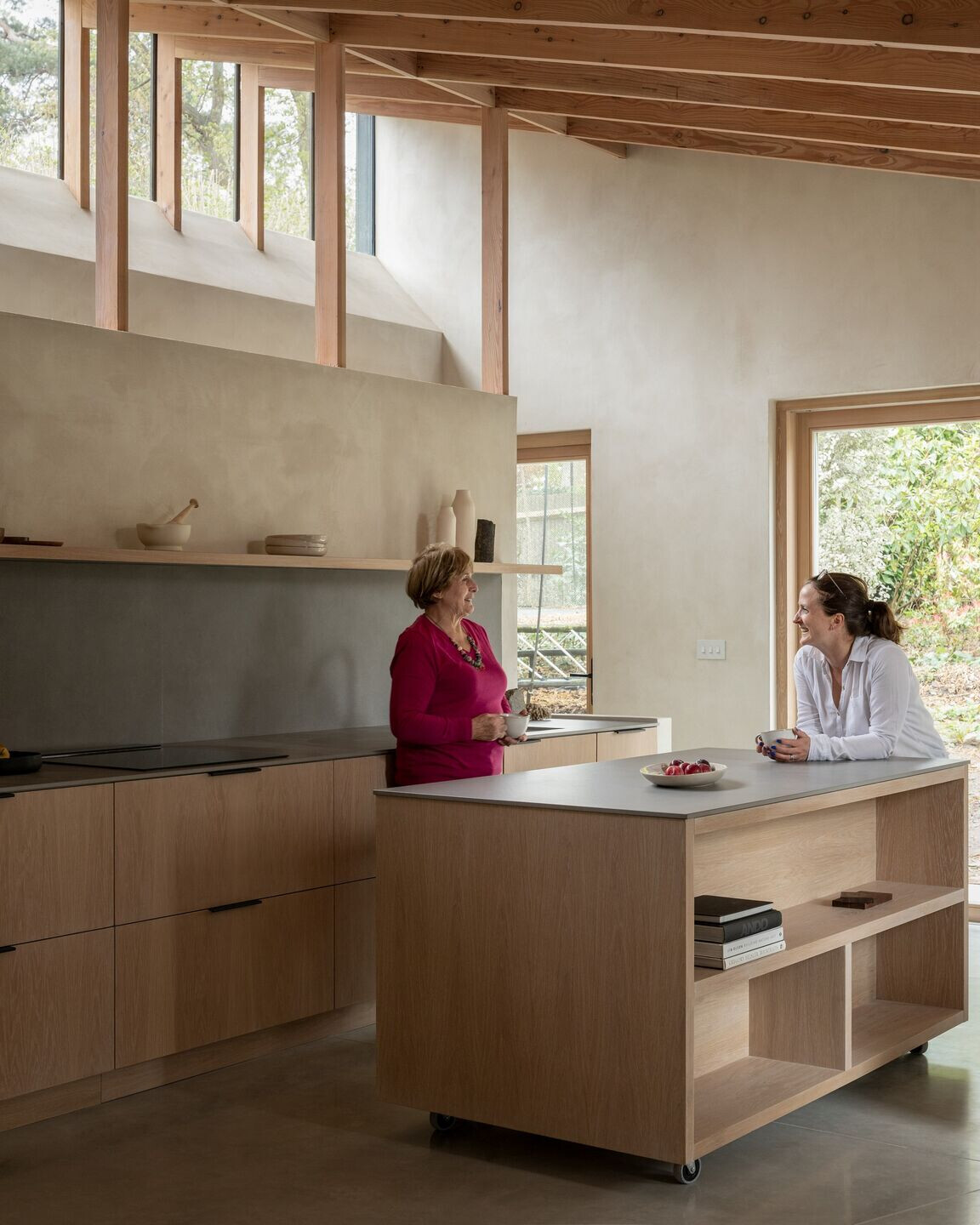

The building is constructed from a larch timber frame, with a main flitched central ridge beam creating a dramatic butterfly roof form. The timber frame was built on-site in panels and tightly packed with insulation creating a sustainable, efficient, and highly insulated envelope. Triple glazing and air-tight construction means the house will be thermally efficient and relies on very little energy to heat. It has been designed to accommodate a heat-pump in the future.
Five years in the making, Butterfly House has been a careful exploration of form and material, but also a new expression of multigenerational living. By not falling into the tropes of accessible design and elderly accommodation, it proposes a new model for assisted living that empowers rather than restricts its future user; ensuring continuity of use for generations of families to come.

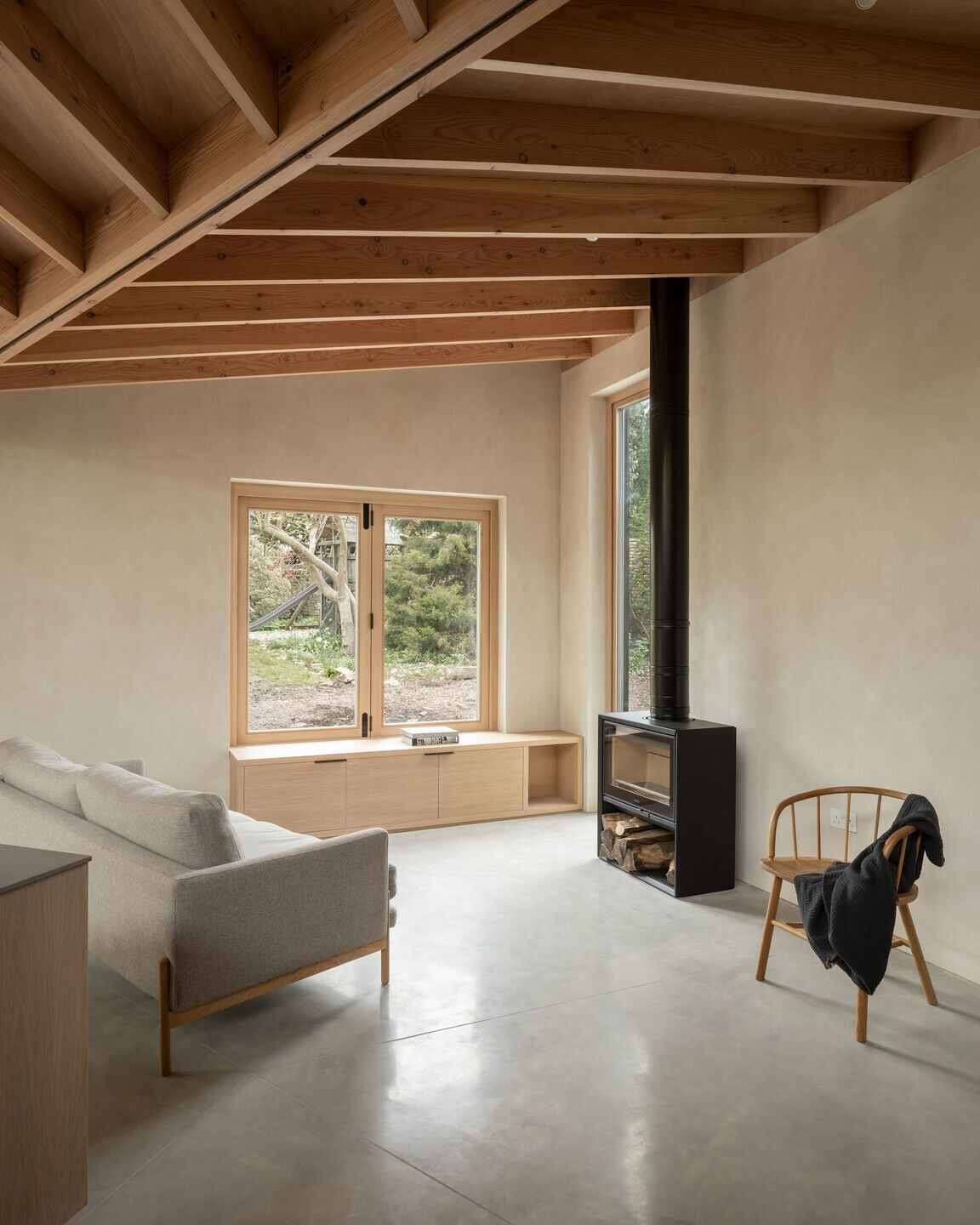
Oliver Leech, Director, Oliver Leech Architects says;
‘The project became a study of materiality, light, form and scale. The position and shape of the site dictated its origami-like roof form. Lower at the boundaries and rising to a tall central spine that allows light to pour in from the clerestory glazing. The house is very compact but at the same time feels spacious without opening out views to neighbouring house. Small tricks like reflecting the view of a distant tree from a skylight helps the house feel better connected to its wider surroundings.
The charred Shou Sugi Ban timber allows the building to blend into the shadows of the trees, but also gives the house its own visual identity and presence without imposing on the main house. Inside the house the opposite approach was taken, with exposed larch structures, and oak joinery providing a warmth to the spaces.’
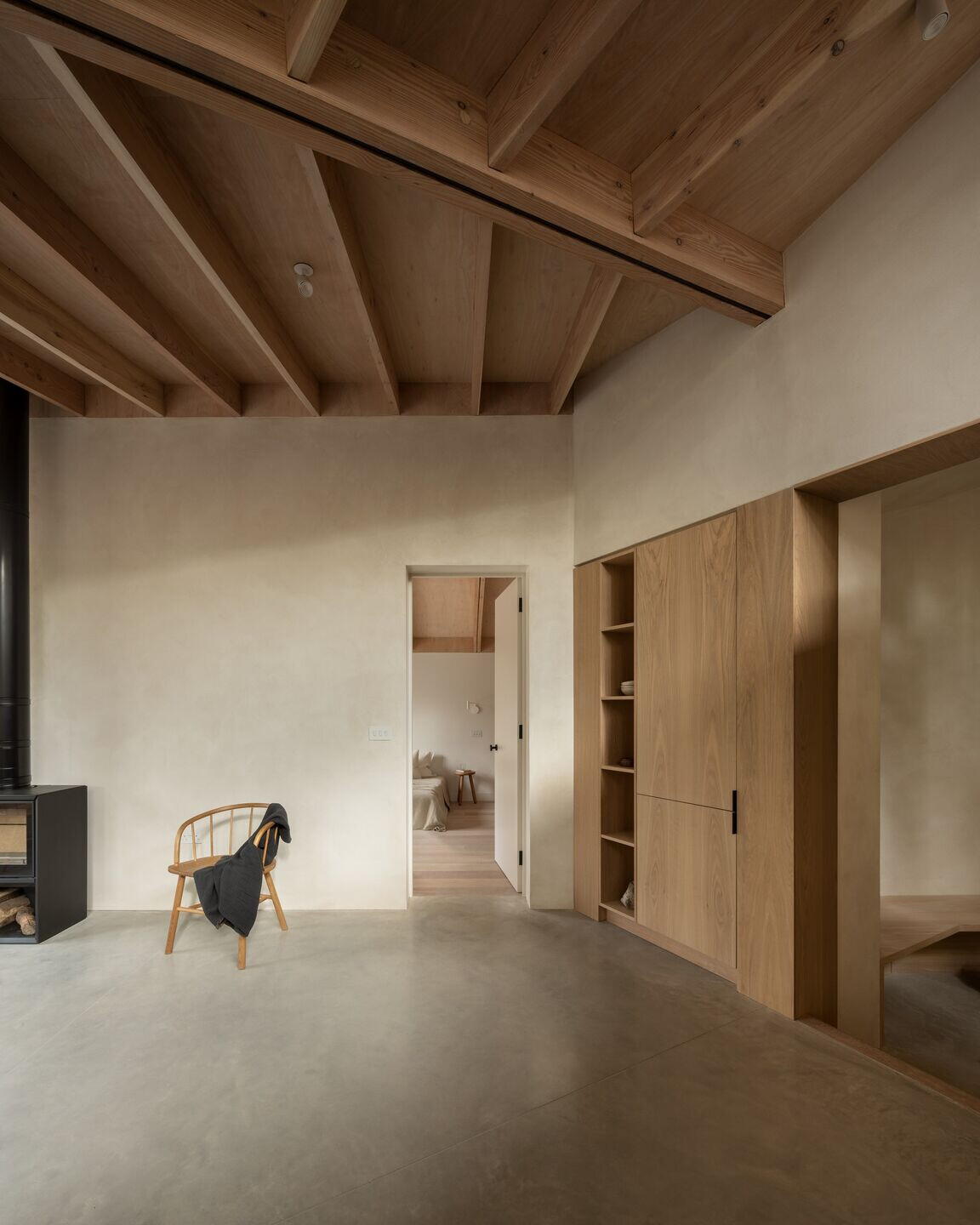

Nikki & Richard Earthrowl, clients say:
‘We enjoyed working with Oliver and the team on this project, the attention to detail is meticulous and they really guided us through every step of the way, from brief to completion. We felt that Oliver and his team listened to us and they really understood our needs from the outset. They have created a haven for my family (and generations) to come, we can’t wait for the beautiful space to come to life and be enjoyed for the foreseeable.’
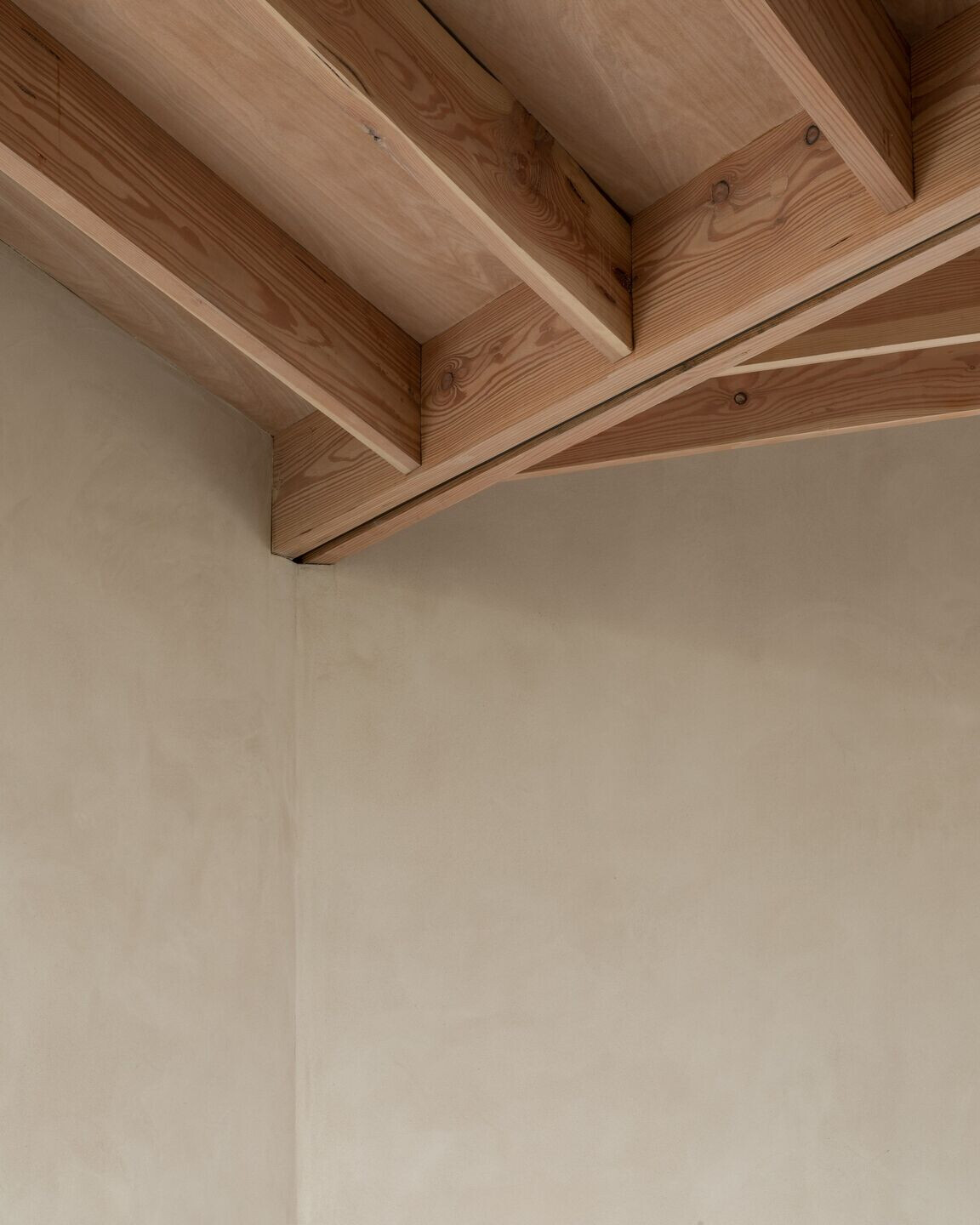
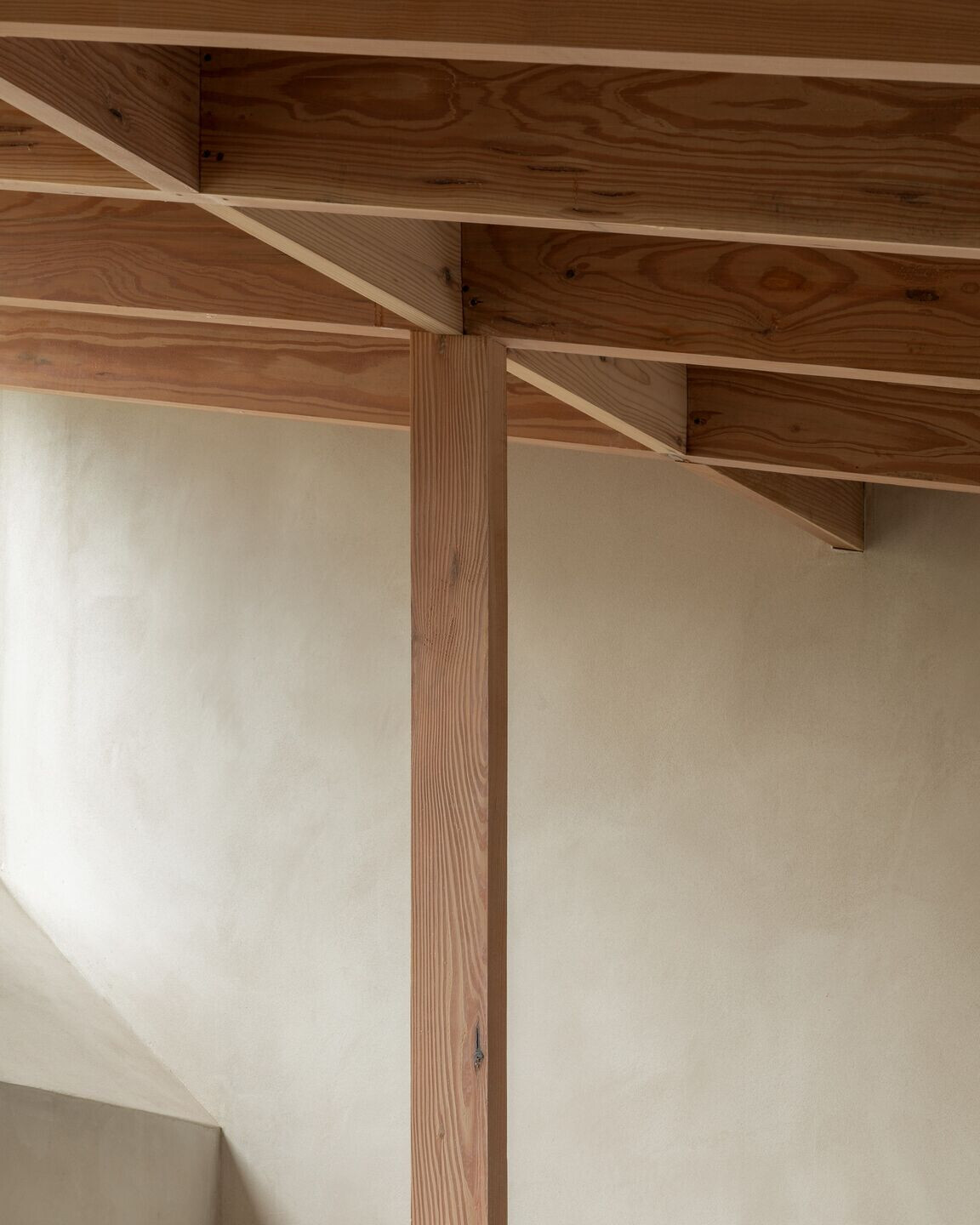
Team:
Architect: Oliver Leech Architects
Interior Designer: Oliver Leech Architects
Structural engineer: Corbett & Tasker
Main contractor: Trace Design & Build Ltd.
Photographer: © Ståle Eriksen
Client: Nikki & Richard Earthrowl

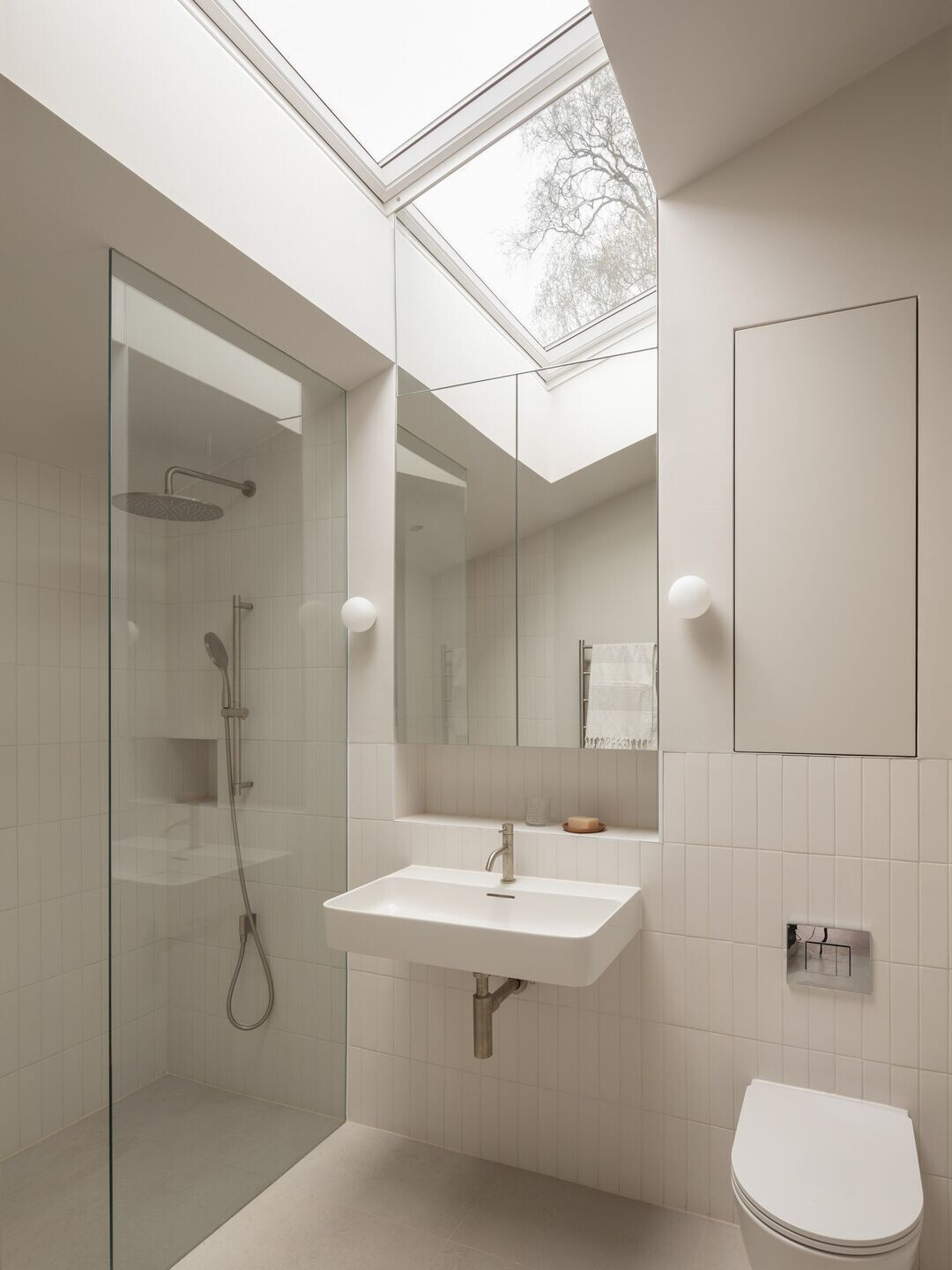
Material Used:
1. Glazing: Bois Rois (timber), Maxlight (aluminium), Velux (skylights)
2. Timber cladding: Exterior Solutions Ltd.
3. Concrete floor: Steysons
4. Fireplace: Frost Fireplaces
5. Timber floors: Reevewood
6. Kitchen & joinery: Weymont & Wylie
7. Bathroom fittings: Crosswater / Laufen
8. Lighting: Astro
9. Clay plaster: Clayworks
10. Tiles: Mandarin Stone
11. Paint: Paint and Paper Library

